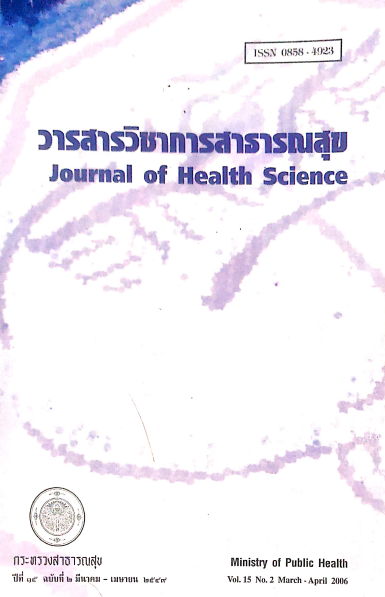Chemical Constituents and Antioxidant Activity in Green Tea Beverages
Keywords:
antioxidant activity, green tea beverage, LC-MS-MS, catechins, caffeineAbstract
Twenty four samples of green tea beverages from 11 distributors were collected and catego rized into 3 groups of the drinks either mixed with fruit juice (9 sample), mixed with milk (2 samples) or plain (13 samples). The antioxidant activity of all samples was evaluated using DPPH (diphenylpicrylhydrazy) assay and the ones reported with high activity were further analysed by liquid chromatography-electrospray ionization-mass spectrometer-mass spectrometer (LC-ESI-MS-MS). The quantity of caffeine in the samples was also determined by using high performance liquid chromatography (HPLC). The experiment was carried out during January-May 2005. The results showed that twenty one of the twenty four (87.5%) samples actually had more than 80 percent of antioxidant activity. Thirteen green tea samples were extracted with ethyl acetate and the crude extract was reconstitued with methanol and injected to LC-MS system by flow injection analysis (FIA). The mobile phase consisted of acetronitrile: 0.1% formic acid, 50:50 v/v in full scan mode negative ionization. The result showed that all samples had deprotonated molecular ions [M-H]-1 at m/z 169, 289, 305, 411 and 457 amu. The product-ion scan of each m/z was undertaken and compared the mass spectrum with standard compounds. Gallic acid, epicatechin, epigallocatechin, epicatechin gallate and epigallocatechin gallate were identified as active chemical compounds in green tea. The range of caffeine content in green tea beverages was 4-17 mg/100 ml with the average of 9.7 mg/100 ml.
Downloads
Downloads
Published
How to Cite
Issue
Section
License
Copyright (c) 2019 Journal of Health Science

This work is licensed under a Creative Commons Attribution-NonCommercial-NoDerivatives 4.0 International License.







